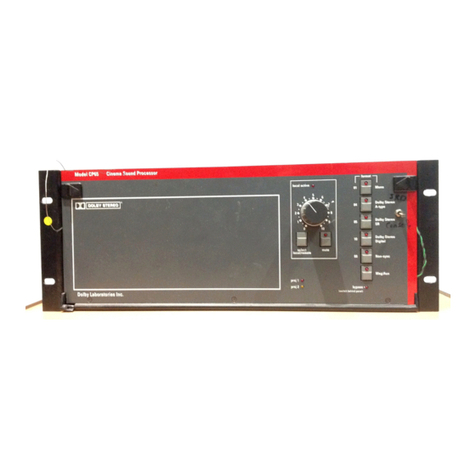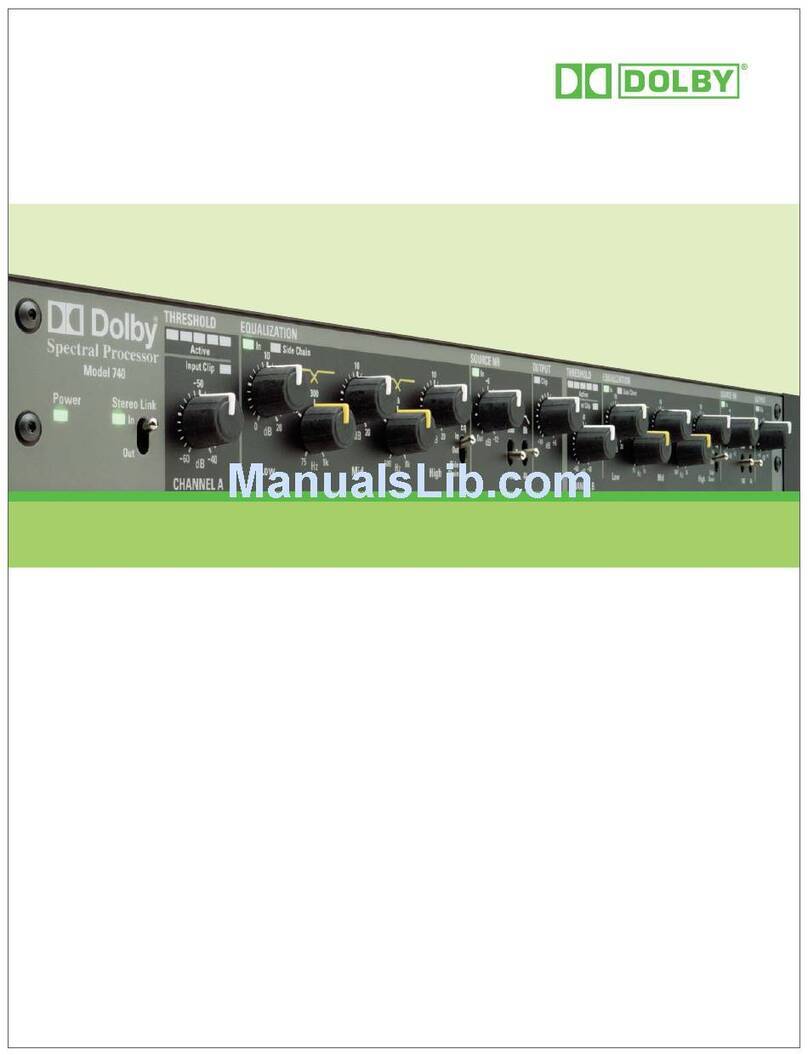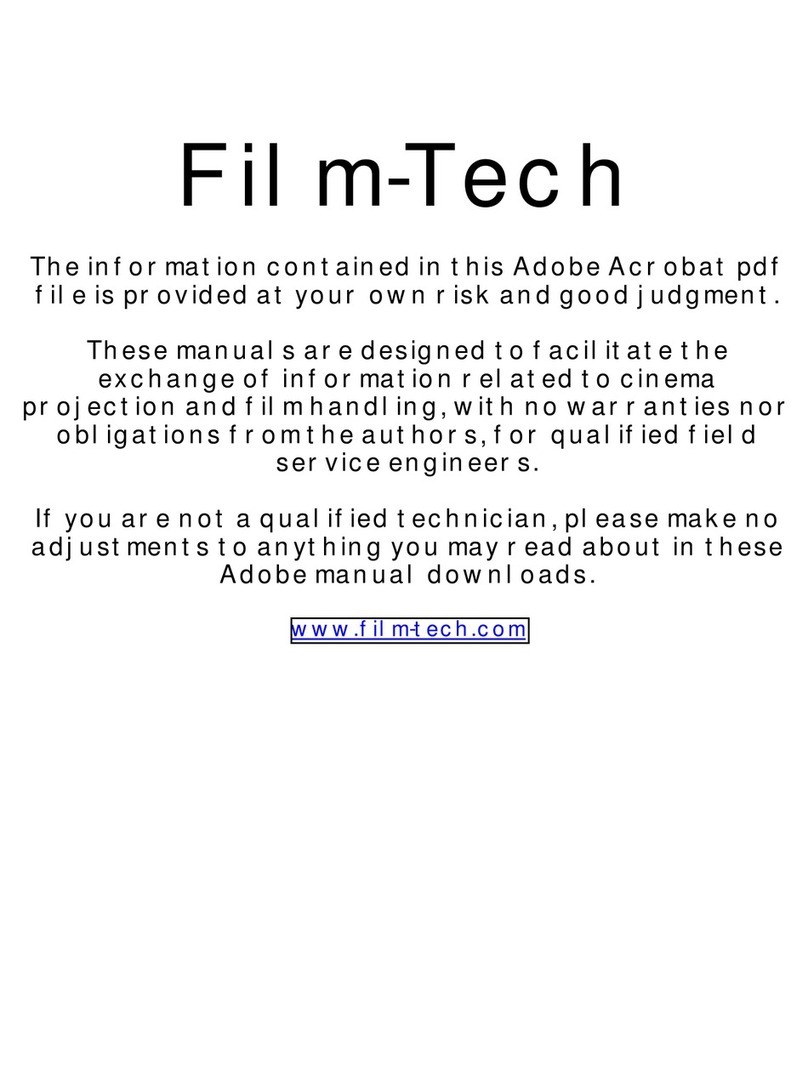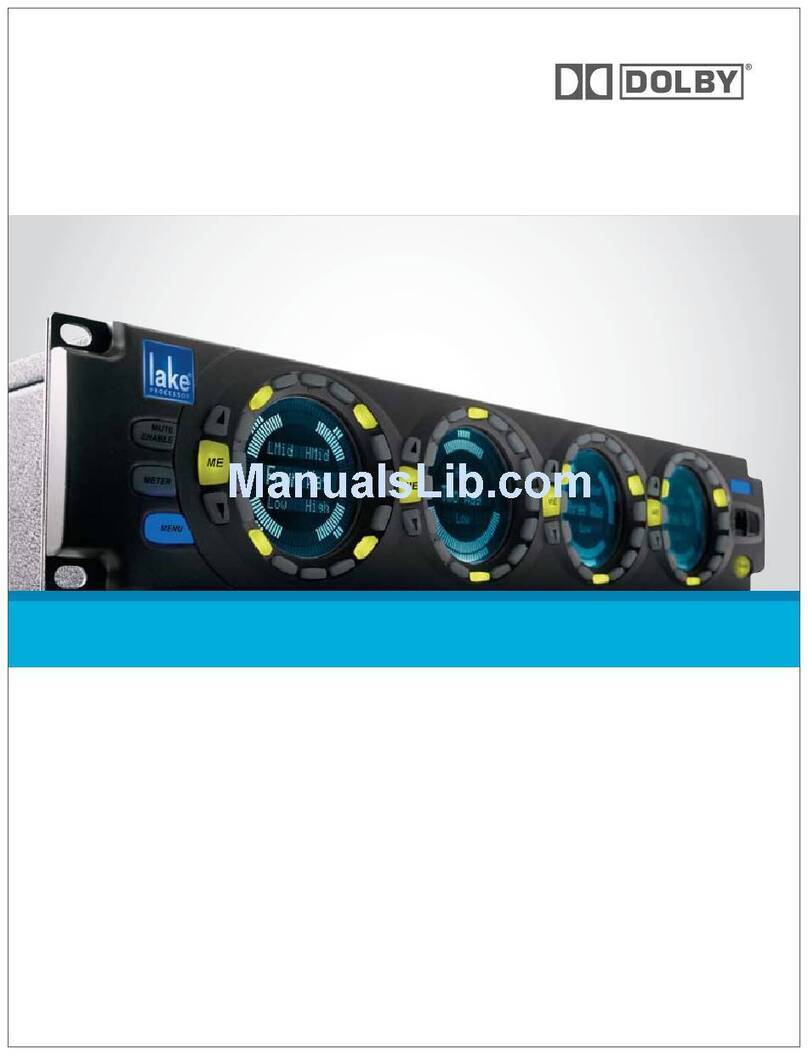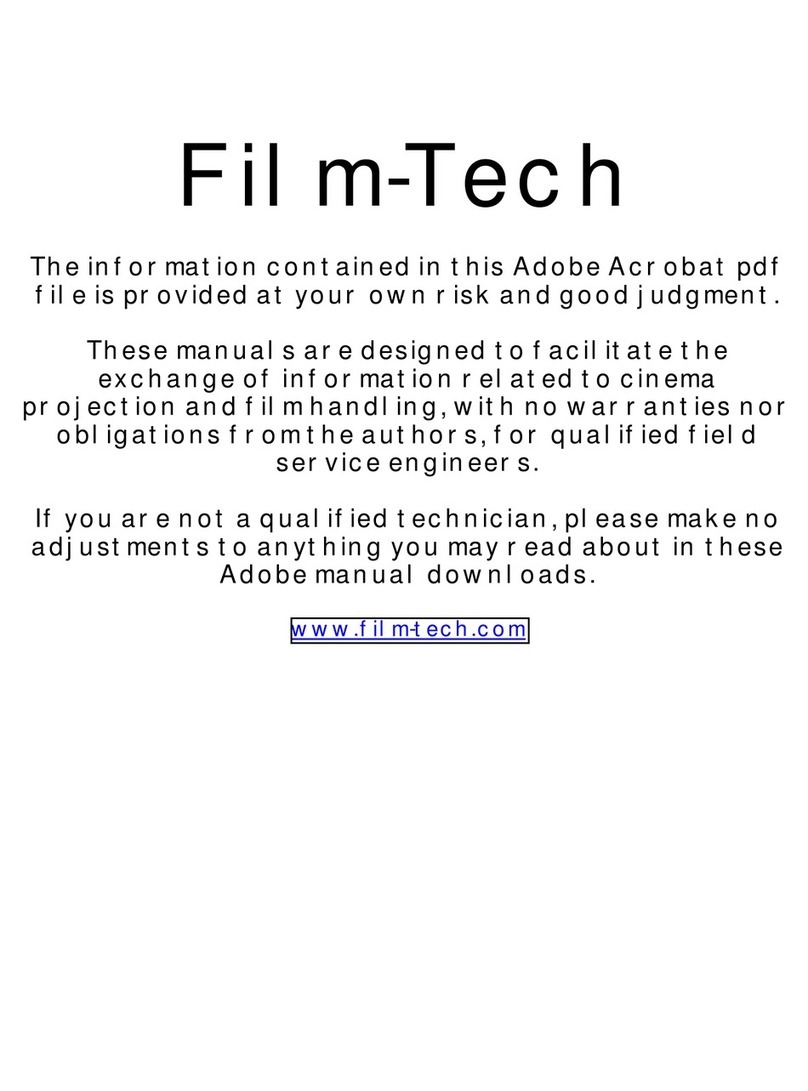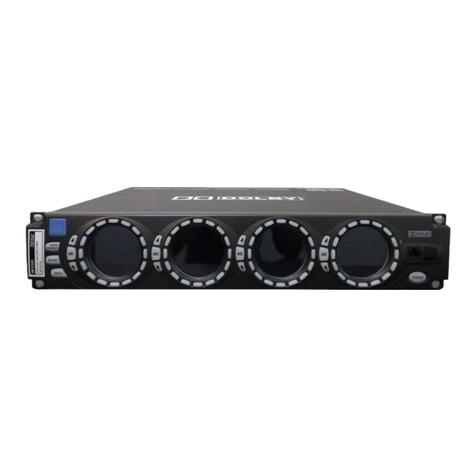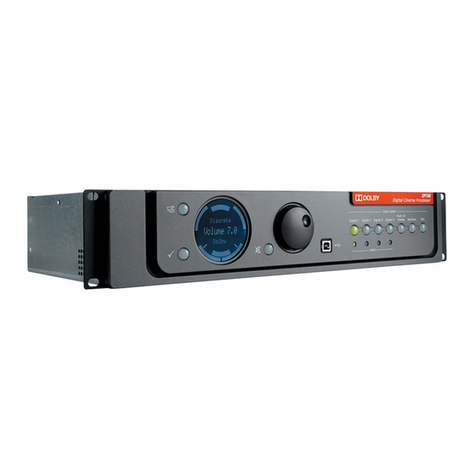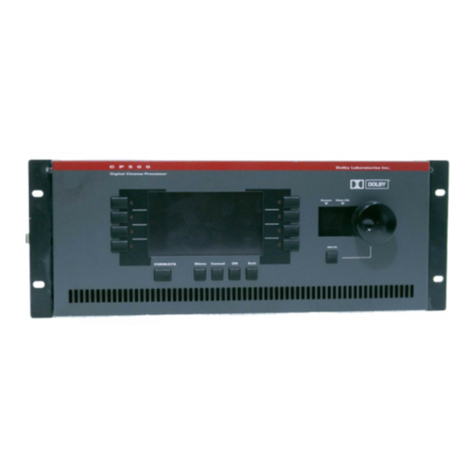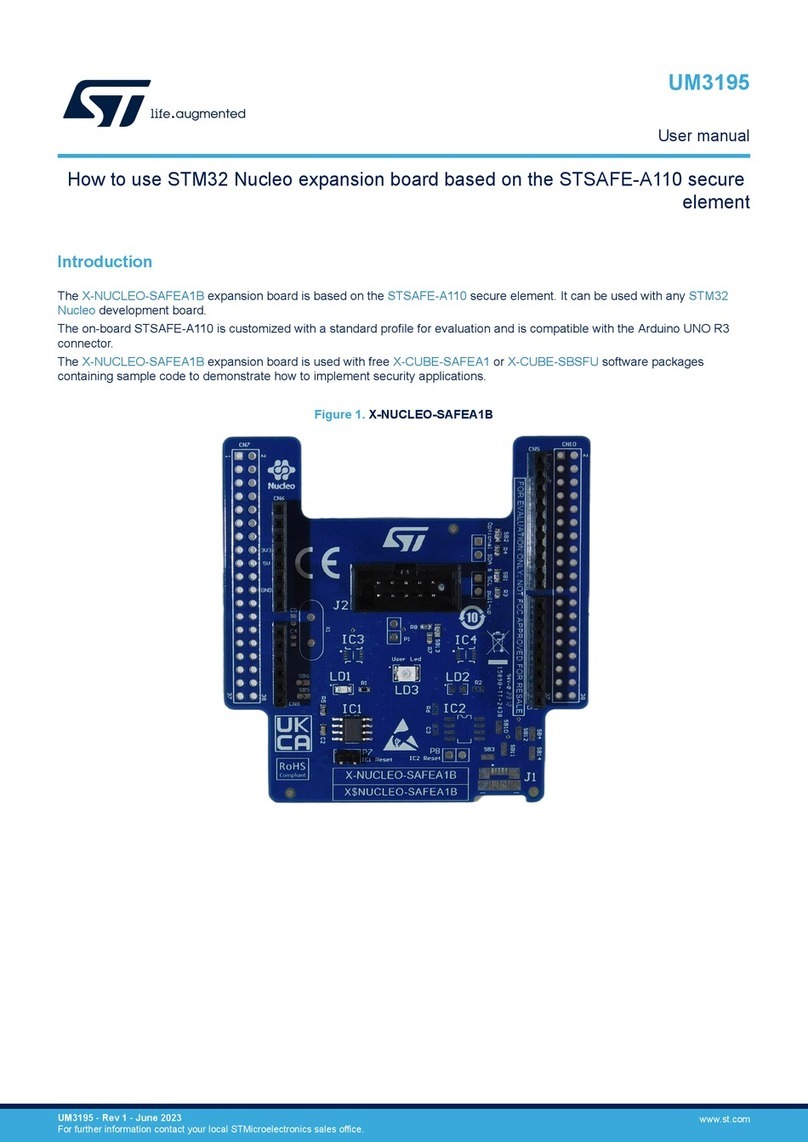SPECIFICATIONS
iii
DA20 Digital Film Sound
Adaptor
Inputs
Digital Soundhead
Inputs for up to two Dolby Cat.
No.699/700 Digital Soundheads
or comparable inboard readers.
Audio
For use with Dolby CP200
Cinema Processors (separate
input not required for CP65 and
CP55).
Motor Start
Two control inputs detect motor
start signals from projectors 1 and
2.
Projector Changeover
Single input. Ground to select
projector 2, open for projector 1.
Outputs
Audio
Left, Center, Right, Left
Surround, Right Surround, Mono
Surround and Subwoofer (L, C, R,
LS, RS, S and SW).
Auxiliary Data Port
RS-232 standard 8 bit data
available.
Cinema Processor Interface
Format Control inputs and
outputs connect via specific
cables to the Dolby CP65, CP200
or CP55, sensing the currently
selected format and providing
automatic switching as required.
Front Panel Indicators
Signal Present
One LED per channel indicates
that a signal level above –40 dB is
present at the analog output of
the DA20.
SR•D Digital
Indicates that valid digital data is
being processed.
SR•D Analog
Indicates that the system has
selected Dolby Stereo SR (analog)
operation.
Motor 1/ Motor 2
Indicates “motor running” signals
used for changeover.
Maximum Output
20 dB above Dolby level.
Dynamic Range
92 dB.
Projector Speed Tolerance
23 – 26 frames/second, nominal.
Construction
All plug-in modules are
constructed using printed circuit
cards, 96-way DIN connectors.
Conforms to FCC class A EMI
specification.
Dimensions
3 units high, rack mounting; 129
x 283 mm (5.25 in. x 19 in.).
Maximum projection behind
mounting surface 362 mm
(14.25in.).
Shipping Weight
9 kg (20 lb.).
Power Requirements
85 to 265 VAC, 50 - 60 Hz.
Power Consumption
Maximum 100 Watts; typical 60
Watts.
Ambient Operating
Temperature
Up to 40˚C.
Cat. No. 700 Digital
Soundhead
Size
152.4 mm h. x 101.6 mm d. x
254mm w. (6 in. x 4 in. x 10 in.).
Shipping Weight
10.5 kg (24 lb.).
Power Requirements
Exciter lamp requires
approximately 3.5 A at 10 V,
provided by integral exciter lamp
power supply. 85 to 264 VAC;
50- 60 Hz.
Power Consumption
Maximum 100 Watts; typical 60
Watts.
Projector Changeover
Indicates the status of the
changeover control lines.
Power Supply
+15 V, –15 V and +5 V.
Data Status
Numeric LED display indicates
data recovery efficiency from
digital print.
Signal Level
Four-LED display indicates
digital audio signal level for each
channel.
DA20 Internal Controls
System Delay
Three rotary switches set time
delay to achieve synchronization
of sound with picture through
different mounting positions for
digital soundhead. Adjustable
from 4 to 132 frames (16 to 528
perforations) in 1/4-frame
increments.
Surround Delay
Single rotary switch sets delay for
left and right surround channels.
0-140 ms adjustable in 10 ms
increments.
Cinema Processor Type
Selects format protocol and
signal switching for Dolby CP65,
CP200, or CP55.
DA20 System
Specifications
Output Level
300 mV for Dolby Level (20 dB
below maximum modulation) to
match Dolby Cinema Processors.
Frequency Response
L, C, R, LS, RS, S: 20 Hz to 20 kHz
±0.5 dB. SW: 20 Hz to 120 Hz
±0.5 dB.
Noise Level
More than 72 dB CCIR/ARM
below Dolby level at DA20
outputs.


